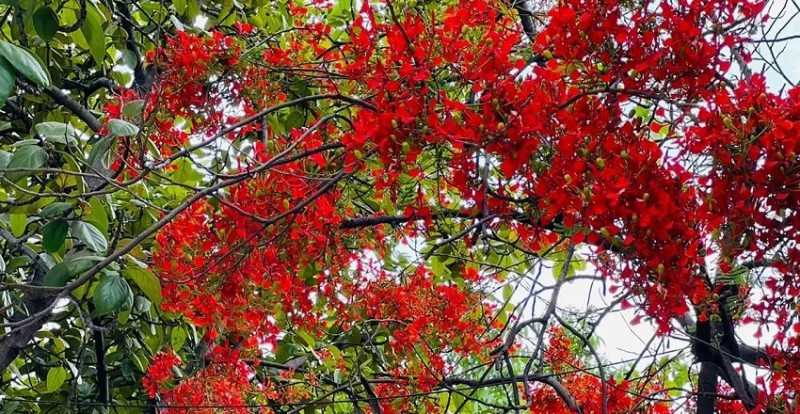
As the scorching sun climbs higher in the sky, and the air thickens with warmth, India transforms into a kaleidoscope of colors and fragrances. One of the most enchanting aspects of the Indian summer is the abundance of vibrant flowers that bloom across the country, adorning gardens, temples, and homes alike. These flowers not only add to the visual spectacle but also carry deep cultural significance, often symbolizing the essence of the season. Let's take a delightful journey through some of the iconic Indian flowers that embody the spirit of summer.
Lotus (Nelumbo nucifera):
Undoubtedly the most revered flower in Indian culture, the lotus symbolizes purity, divinity, and enlightenment. It thrives in the summer months, its delicate petals unfurling gracefully amidst serene waters. In Hindu mythology, the lotus is associated with deities like Lakshmi and Saraswati, representing beauty, prosperity, and knowledge. Its serene presence in ponds and lakes across India brings a sense of tranquility, making it a quintessential symbol of summer.
Marigold (Tagetes erecta):
With its vibrant hues of yellow and orange, the marigold is synonymous with Indian festivities and celebrations. In summer, these cheerful blooms adorn courtyards, temples, and marketplaces, adding a splash of color to the landscape. Marigolds are not only aesthetically pleasing but also hold cultural significance, symbolizing auspiciousness and prosperity. Strings of marigold garlands are commonly used to decorate homes and venues during weddings, festivals, and religious ceremonies, infusing the air with their sweet, earthy fragrance.
Hibiscus (Hibiscus rosa-sinensis):
Known for its striking beauty and therapeutic properties, the hibiscus is a quintessential summer flower in India. With its large, trumpet-shaped blooms in shades of red, pink, and white, it adds a touch of tropical allure to gardens and landscapes. In Ayurveda, the hibiscus is prized for its cooling properties, making it a popular choice for herbal teas and hair care products. Its presence in traditional rituals and ceremonies underscores its significance as a symbol of vitality, femininity, and devotion.
Frangipani (Plumeria spp.):
With its intoxicating fragrance and delicate, waxy petals, the frangipani is a beloved summer flower across India. Native to tropical regions, it thrives in the heat, gracing gardens and temple courtyards with its exotic beauty. In Indian culture, the frangipani symbolizes love, devotion, and eternal beauty, making it a popular choice for religious offerings and bridal adornments. Its sweet, floral scent evokes memories of warm summer evenings, inviting people to bask in its enchanting aura.
Gulmohar (Delonix regia):
Often referred to as the "flamboyant tree," the gulmohar bursts into bloom during the peak of summer, painting the landscape with fiery hues of red and orange. Its vibrant clusters of flowers against a backdrop of lush green foliage create a mesmerizing sight that symbolizes vitality and resilience. In Indian literature and art, the gulmohar is celebrated for its fiery beauty and symbolic significance, embodying the spirit of summer with its radiant blooms.
As the sun reigns supreme and the mercury rises, these iconic Indian flowers serve as timeless reminders of the beauty and vibrancy of summer. Whether adorning sacred rituals, festive celebrations, or everyday landscapes, they infuse the air with their fragrance and color, weaving a tapestry of joy and reverence across the land. So, take a moment to immerse yourself in their splendor, and let their beauty inspire you to embrace the warmth and abundance of the season.
Beware of These Menaces: Exploring Lesser-Known Mosquito-Transmitted Diseases
How Women May Experience Side Effects of Birth Control Pills